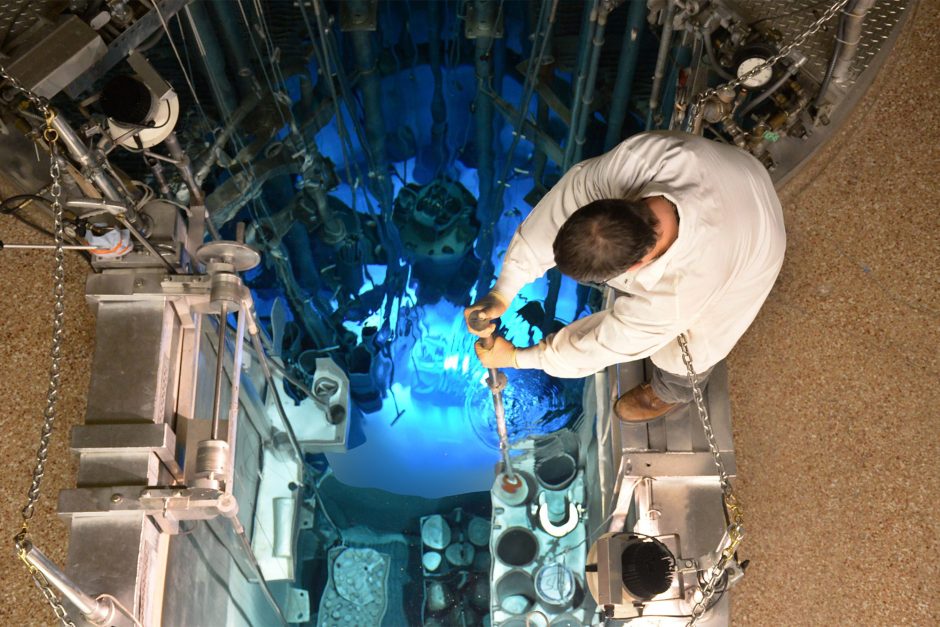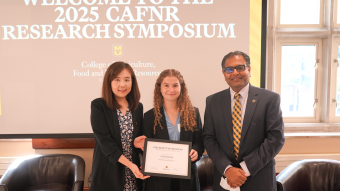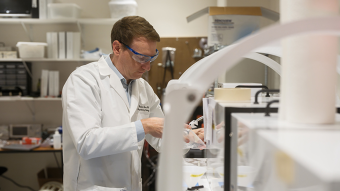
July 24, 2024
Bringing a new medicine to market can be a long journey, but the potential to save lives makes it worthwhile.
Twenty years ago, the University of Missouri helped research and develop a little-known radioisotope called lutetium-177 (Lu-177). That innovation laid the foundation for clinical trials and Food and Drug Administration (FDA) approvals for a new class of drugs known as radiopharmaceuticals, resulting in thousands of successful cancer treatments.
More than 2,000 clinical trials for cancer treatments using radioisotopes like Lu-177 are now underway. In this burgeoning field, Mizzou is the essential first stop — because the University of Missouri Research Reactor (MURR) is the only supplier in the United States creating the part of these drugs that destroys cancer cells while sparing healthy ones.
“Our research reactor has been at the forefront of the development and production of radioisotopes that are saving lives every day,” said Matt Sanford, MURR’s executive director. “MURR’s innovative design and year-round operating cycle allow us to reliably produce the active pharmaceutical ingredients in multiple FDA-approved drugs. What we produce today has a direct impact on the lives and well-being of patients around the world.”
Even though only two approved radiotherapies for cancer are on the market today, these treatment possibilities represent one of the fastest-growing fields in oncology research and testing.
What is a radiopharmaceutical?
Radiopharmaceuticals use highly targeted radiation to treat or diagnose a disease. To develop these therapies, a radioactive isotope, such as those produced at MURR, is linked to a targeting molecule that seeks out certain cellular features on a tumor. The isotope, linker and targeting molecule will form a radiopharmaceutical.
“The advancement of radiopharmaceuticals has created one of the most effective forms of precision medicine to date,” said Dylan Stoy, director of Therapeutic Strategy at PSI, a CRO with over a decade of experience working with these therapies. “With applications in diagnostics, therapeutics, or ideal theranostic pairings, radiopharmaceuticals give patients and providers a great option in an ever-growing list of cellular targets and indications — and I think we are just starting to see the tip of the iceberg.”
The success of drugs such as Lutathera® and Pluvicto® has opened the door for new treatments, and researchers and pharmaceutical companies are looking at different radioisotopes and radiopharmaceuticals that can be used to treat and diagnose other types of cancer as well as diseases such as neurodegenerative disorders.
The demand for radioisotopes is rapidly increasing, and the University of Missouri is meeting the challenge. The university plans to build a new, larger, state-of-the-art reactor — NextGen MURR — which will expand the university’s capacity to produce medical isotopes that will be used in advanced cancer medicines for decades to come.
Read more from the MU Research Reactor


